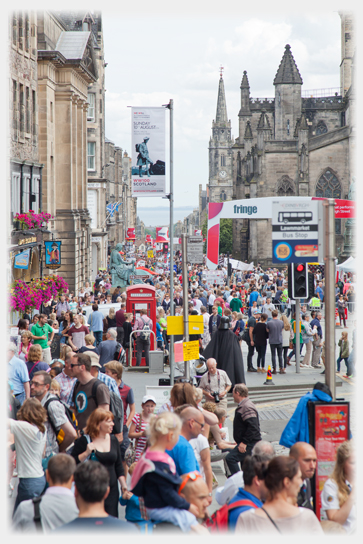
|
Worlds and a Metaphor
World is used in a number of ways, we speak of cultural worlds, we use it as a synonym for our planet, and we use it to mean the totality of what we experience. In this last sense it has been popular in modern philosophy. We share a common world, and it is this public world that we try to understand better, relating our subjective experiences to it. This use is familiar from examples such as Wittgenstein's claim that: "The World is all that is the case." The sense is also familiar from science fiction which introduces us to other worlds: imaginative creations which, in the hands of good writers, have a ring of truth about them.
There are 'other worlds' much closer to hand. Russell explores the relationship between our daily world and the world that science describes where "...all natural phenomena [are] reduced to motions. Light and heat and sound are all due to wave motions..." 2 He holds that the relationship between this strange world of science and the one of experience is one of correspondence. Just as the items in a catalogue relate to things that we purchase, so the objects that we live with (tables and buildings) are held to relate to their unseen counterparts. Many writers, both eastern and western, have had some version of this dichotomy of worlds.
An example from modern science is striking as it describes a world in which, if we could remove all the space between the particles that make up our bodies, then all of humanity could be condensed into the size of a sugar lump. The truth of the crowd in the picture above, and the scientific truth of their possibly tiny physical mass, are accommodated by talking of two worlds. Russell wants to link these by saying they correspond to one another. But is that the way it is? Are there two sorts of worlds to be linked together?
Maybe a metaphor helps. The picture above also has its own duplicity. On the screen, or in the picture, is a coloured image; but 'behind' that there is also the string of zeros and ones that goes to form a digital image. In one way these are radically different sorts of things: coloured areas and a string of numbers, while in another they are clearly one object: the image. So too with the proposal about worlds. In one way the crowd depicted above (the world of experience), is radically different from the mass of its particles (the world of matter) , while in another way it is the same thing. They are not two worlds like Mars and Jupiter, ontological equals. They are one world looked at in different ways.
An interesting parallel emerges here, many problems revolve around misleading distinctions or a failure to make a distinction, and an understanding of the viewpoints involved. Photography is turned into an art by the way it plays with making objects stand out for us, and the viewpoints that can be taken.
References
- Wittgenstein, Ludwig (1916) 'Tractatus' Routledge (1.1)
- Russell, Bertrand (1912) 'The Problems of Philosophy' Thonton Butterworth (p. 43)
21st April 2015 ~ 23rd May 2015